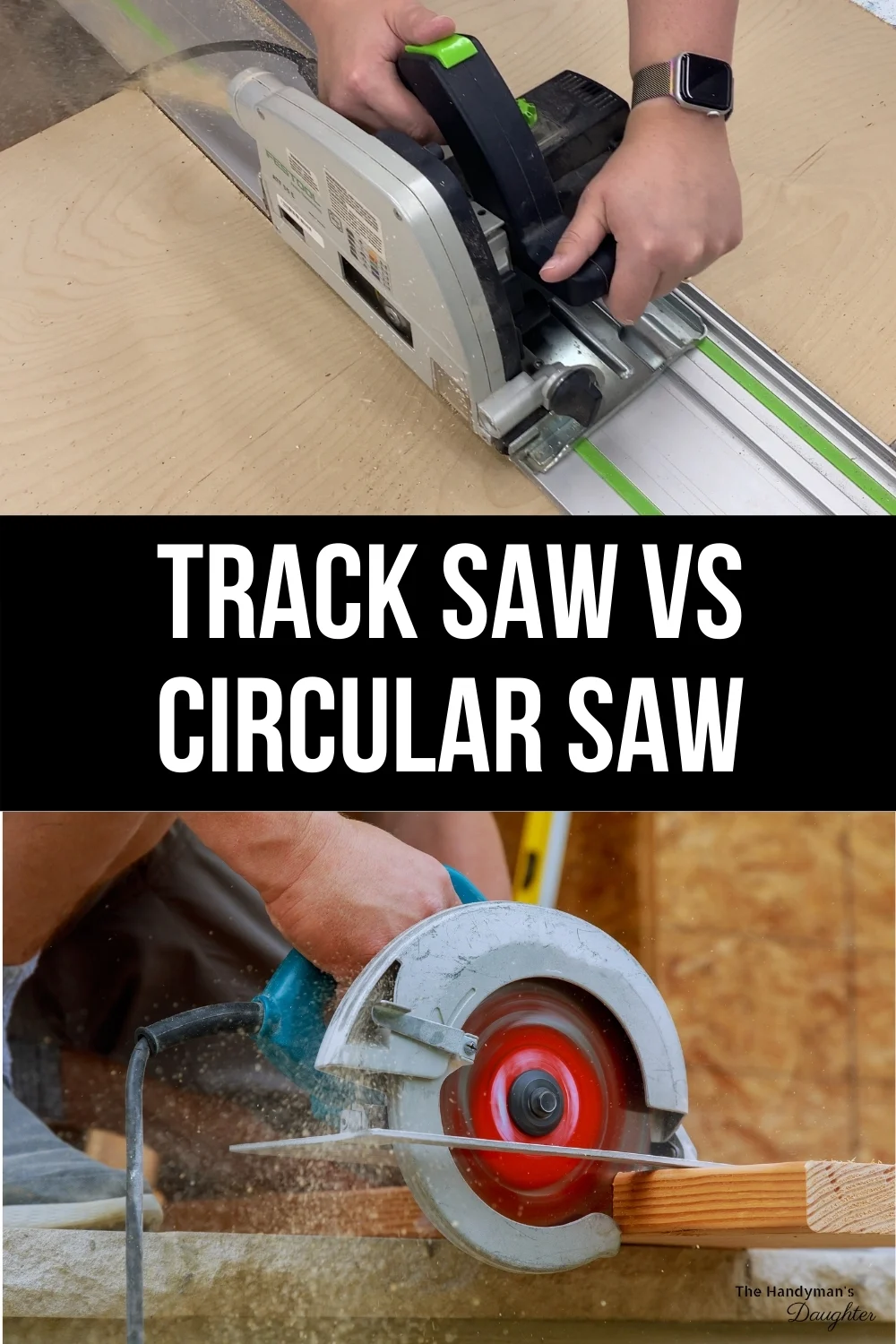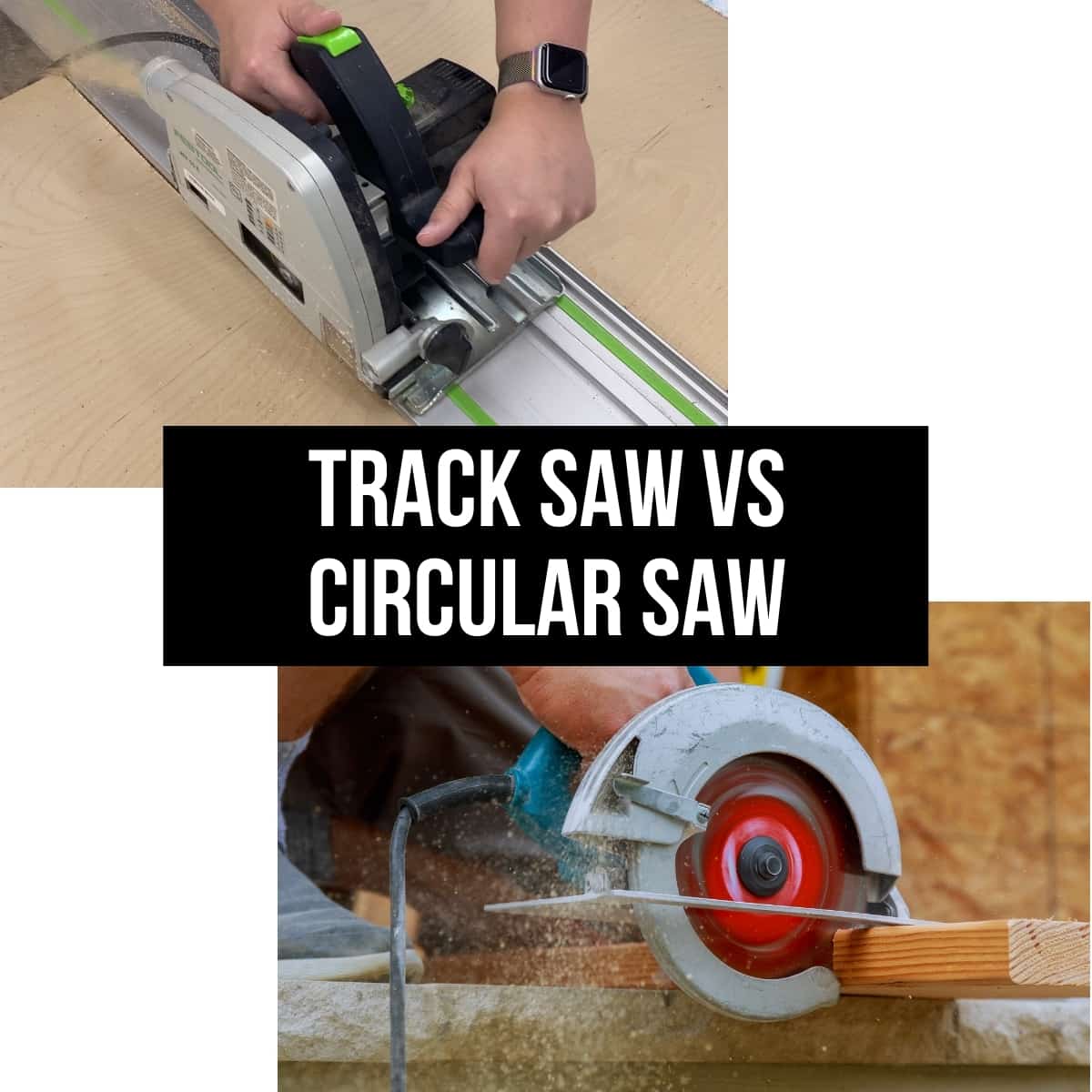Track saw or circular saw? That is the question that many DIY enthusiasts and woodworking hobbyists ask themselves. Can a track saw replace a circular saw? Well, let’s dive in and find out!
If you’re exploring the world of woodworking, you might be wondering if a track saw can do the same job as a circular saw. Don’t worry, you’re not alone! Many people are curious about the capabilities of these two powerful tools.
So, in this article, we’ll take a closer look at whether a track saw can indeed replace a circular saw. We’ll explore the features, benefits, and limitations of both tools to help you make an informed decision. Get ready to unleash your inner craftsman and discover the answer to this intriguing question!

Can a Track Saw Replace a Circular Saw?
When it comes to woodworking and DIY projects, having the right tools can make all the difference. Two common tools that often come into consideration are the track saw and the circular saw. While both serve specific purposes, many wonder if a track saw can replace a circular saw. In this article, we will explore the capabilities of both tools, their differences, and determine if a track saw can truly replace a circular saw.
The Track Saw: Power and Precision in One
A track saw is a versatile tool that is designed to make precise cuts with accuracy. It consists of a circular saw connected to a guide rail or track that ensures straight cuts. The track acts as a guide, allowing the saw to slide smoothly along it while cutting. This setup provides stability and eliminates the need for additional clamps or measuring.
One of the key benefits of using a track saw is its precision. The guide rail ensures a straight and accurate cut every time, making it ideal for tasks such as rip cuts, crosscuts, and bevel cuts. The ability to make clean, accurate cuts is particularly important when working with expensive or delicate materials like hardwood or laminates.
Another advantage of a track saw is its portability. The guide rail can be easily disassembled and stored, making it convenient for transport to job sites or different locations within a workshop. Additionally, many track saws have features like dust collection systems, which help keep the workspace clean and free from debris.
Benefits of a Track Saw
1. Precise and accurate cuts: The guide rail ensures straight cuts with minimal effort.
2. Portability: The track saw can be easily transported to different locations.
3. Versatility: It can handle a variety of cuts, including rip cuts, crosscuts, and bevel cuts.
Track Saw vs. Circular Saw: Understanding the Differences
While a track saw offers precision and ease of use, it does have certain limitations when compared to a circular saw. A circular saw is a handheld power tool that can cut through a wide range of materials, including wood, metal, and plastic. It consists of a circular blade that spins rapidly to make cuts.
One of the main advantages of a circular saw is its versatility. Unlike a track saw, a circular saw can handle not only straight cuts but also curved cuts and plunge cuts. This makes it a more suitable tool for tasks that require more flexibility, such as cutting shapes or creating openings in materials.
Additionally, circular saws are often more powerful than track saws, allowing for faster and more aggressive cutting. They are also more commonly available and generally more affordable than track saws, making them a popular choice among DIY enthusiasts and professionals alike.
Choosing the Right Tool for the Job
While a track saw can offer precision and ease of use, it is not necessarily a replacement for a circular saw. The decision between these two tools depends on the specific project requirements and personal preferences.
If you primarily work with materials that require precise, straight cuts, such as sheet goods or large panels, a track saw might be the better choice. Its stability and accuracy can save you time and money by minimizing waste and ensuring precise results. However, if you need a tool that can handle a wider range of cutting tasks and provides more flexibility, a circular saw might be the better option.
Ultimately, both the track saw and the circular saw have their own strengths and applications. It is recommended to have both tools in your arsenal if your budget allows. This way, you can cover a wider range of woodworking tasks and ensure you always have the right tool for the job.
Important Features to Consider When Buying a Track Saw or Circular Saw
1. Power: Look for a track saw or circular saw with sufficient power for the materials you work with.
2. Blade Quality: Invest in high-quality blades that are suitable for the specific material and task.
3. Safety Features: Consider features like blade guards and ergonomic handles for safe and comfortable use.
Maintenance Tips for Track Saws and Circular Saws
1. Keep the blades clean and free from debris to ensure smooth, precise cuts.
2. Regularly inspect the guide rails and tracks for any damage or wear and tear.
3. Lubricate moving parts to keep the saw operating smoothly.
Conclusion
While a track saw can provide precision and accuracy, it cannot completely replace a circular saw. Both tools have their own strengths and applications, and the choice ultimately depends on the specific project requirements and personal preferences. By understanding the differences and considering the necessary features, you can make an informed decision and have the right tools in your workshop to tackle any woodworking task.
Key Takeaways: Can a Track Saw Replace a Circular Saw?
- A track saw is a versatile power tool that can be used to make straight and precise cuts in various materials.
- Unlike a circular saw, a track saw is guided by a track or rail system, allowing for more accurate cuts.
- Track saws are ideal for tasks such as breaking down large sheets of plywood or cutting long boards.
- While a track saw can replace a circular saw in many situations, it may not be suitable for all tasks, especially when it comes to making curved cuts.
- Consider the specific needs of your projects and choose a saw that is best suited for the job at hand.
Frequently Asked Questions
In this section, we’ll explore some common questions about track saws and circular saws.
1. What is the main difference between a track saw and a circular saw?
The main difference is that a track saw is designed to cut in a straight line with the help of a guide rail or track. It provides accuracy and precision, making it ideal for making straight cuts over long distances. On the other hand, a circular saw is more versatile and can make a variety of cuts, including rip cuts and crosscuts, without the need for a guide rail.
So, while a track saw specializes in straight cuts, a circular saw offers more flexibility and can handle different cutting tasks effectively.
2. Can a track saw replace a circular saw entirely?
No, a track saw cannot completely replace a circular saw. While a track saw is excellent for making long, straight cuts, a circular saw is still necessary for other types of cuts, such as bevel cuts, compound angle cuts, and cuts that require a lot of depth. In addition, a circular saw is more portable and convenient for jobs that don’t require precise straight cuts.
However, if you frequently need to make long, straight cuts with high precision, a track saw can be a valuable addition to your tool collection alongside a circular saw.
3. Are track saws difficult to set up and use?
No, track saws are not difficult to set up and use. In fact, they are designed to be user-friendly and provide ease of operation. The guide rail or track ensures straight cuts, making it easier for beginners to achieve accurate results.
Most track saws come with clear instructions on how to set up and use the guide rail. Additionally, many manufacturers provide instructional videos and user guides to assist users in getting familiar with their track saws.
4. Can I use a track saw without a guide rail or track?
No, you cannot use a track saw without a guide rail or track. The primary purpose of a track saw is to cut straight lines accurately, and this is only possible with the help of a guide rail.
The guide rail keeps the saw aligned and prevents it from deviating during the cut. Without a guide rail, it would be challenging to achieve the precision that a track saw provides. So, make sure to always use a guide rail or track when using a track saw.
5. Are track saws suitable for DIY enthusiasts or mainly for professionals?
Track saws are suitable for both DIY enthusiasts and professionals. While professionals often use track saws for their precise cuts and efficiency, they are also accessible and user-friendly for those who enjoy working on projects at home.
Whether you’re working on a professional construction site or tackling DIY projects in your garage, a track saw can be a valuable tool. It helps to ensure accurate cuts, reduces the risk of errors, and saves time and effort in achieving professional-looking results.

Summary
So, can a track saw replace a circular saw? The answer is yes and no.
While a track saw offers precise cuts and smoother edges, it may not be as versatile as a circular saw. Circular saws are great for more rugged and varied tasks.
Consider your specific needs and the type of projects you work on. Ultimately, having both tools in your toolbox might be the best solution.
